Abstract
A total of 289 non-O1 Vibrio cholerae (NVC) strains and 20 rough V. cholerae (RVC) strains isolated in an endemic area were tested for antibiotic resistance and for transferable R-plasmids. Twenty three per cent of NVC and 40% of the RVC isolates were found to be resistant to one or more drugs. Eight NVC and four RVC strains possessed multiple drug resistance, varying from four to eight drugs. The common spectrum found in NVC isolates were chloramphenicol and streptomycin (CS) or chloramphenicol, streptomycin, tetracycline and ampicillin (CSTA). Resistance to sulphamethoxazole (Su) and to trimethoprim (Tm) was encountered infrequently. In RVC isolates in addition CSTASuTm determinants, resistance markers to aminoglycosides kanamycin, gentamicin and neomycin were also found. Eighteen of the 27 V. cholerae strains with two or more resistance determinants transferred them en bloc to Escherichia coli K12. The level of resistance in the recipient strain was equal to or greater than that of the donor vibrio strains. Most of the strains possessing solitary resistance markers were unable to transfer them. beta-lactamase production could be demonstrated in 92.8% of the ampicillin resistant strains. None of the strains was resistant to nalidixic acid or furazolidone. The results emphasize the importance of antimicrobic susceptibility determination of V. cholerae isolates, regardless of the serotypes, before commencing chemotherapy.
Full text
PDF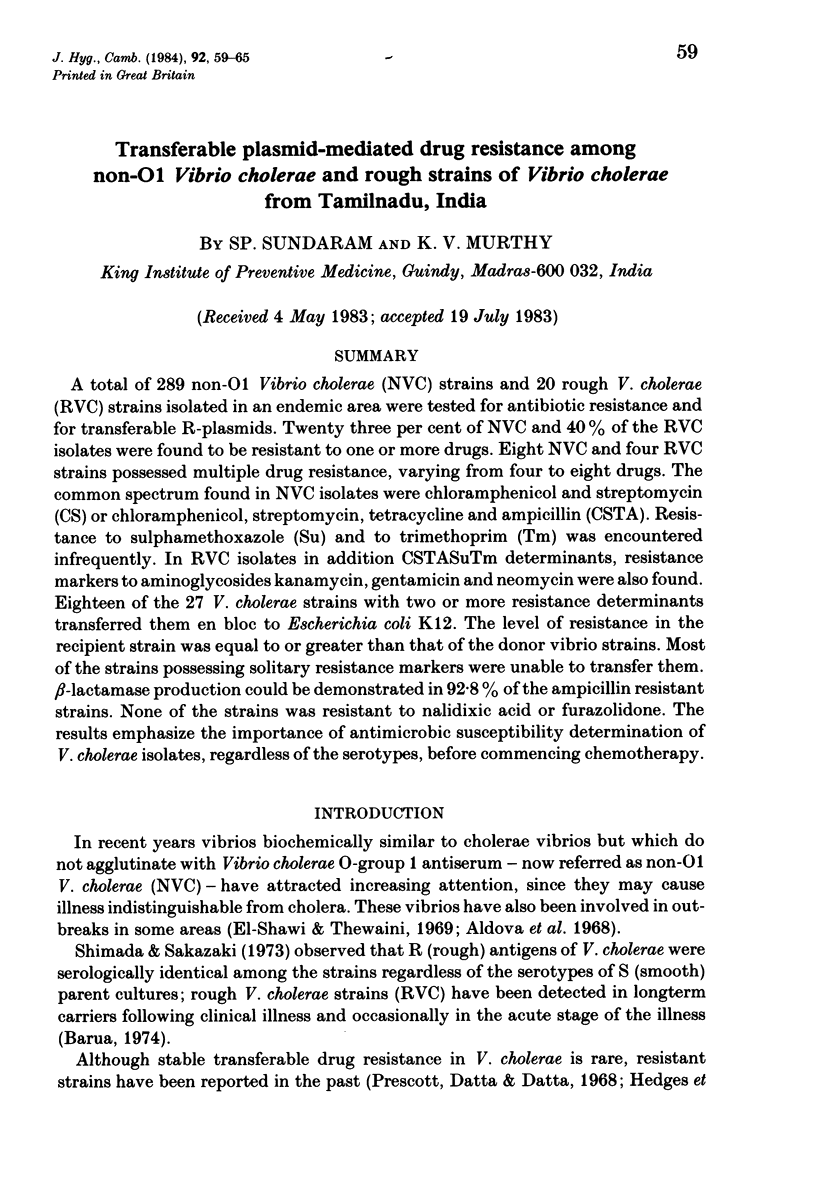
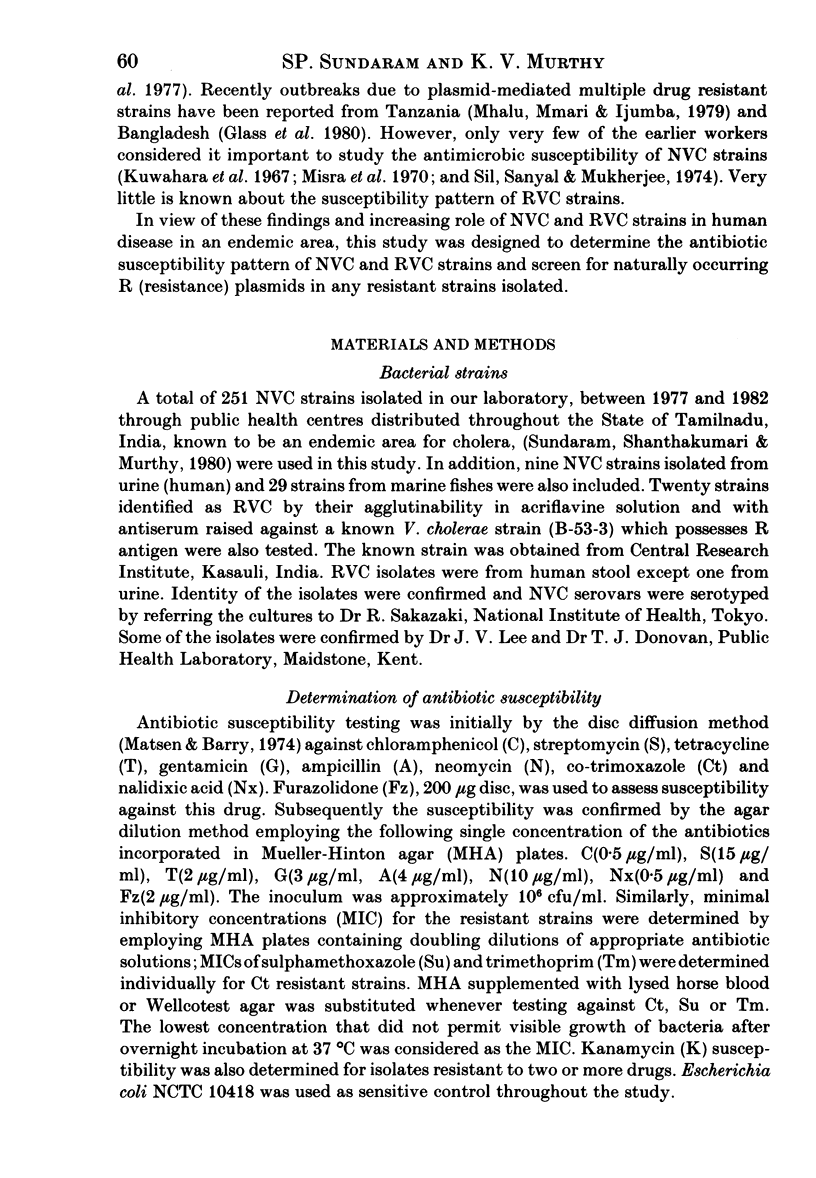

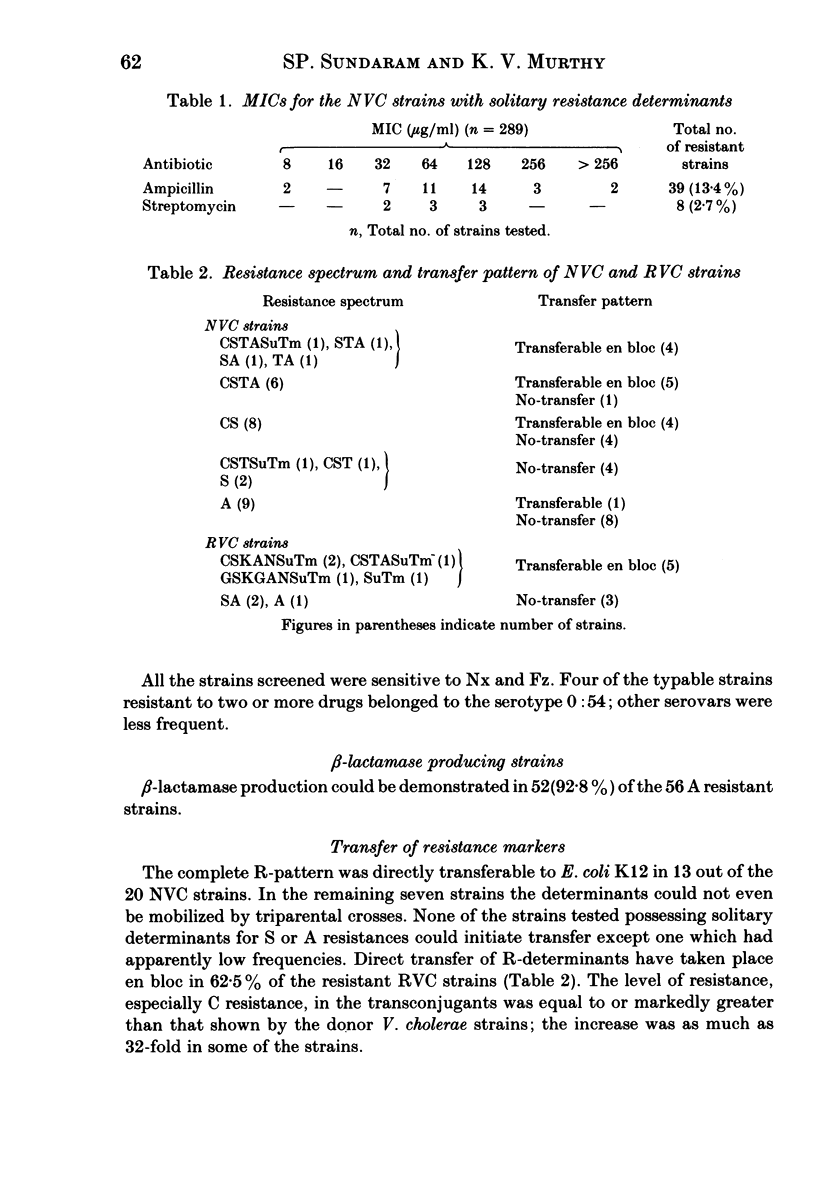
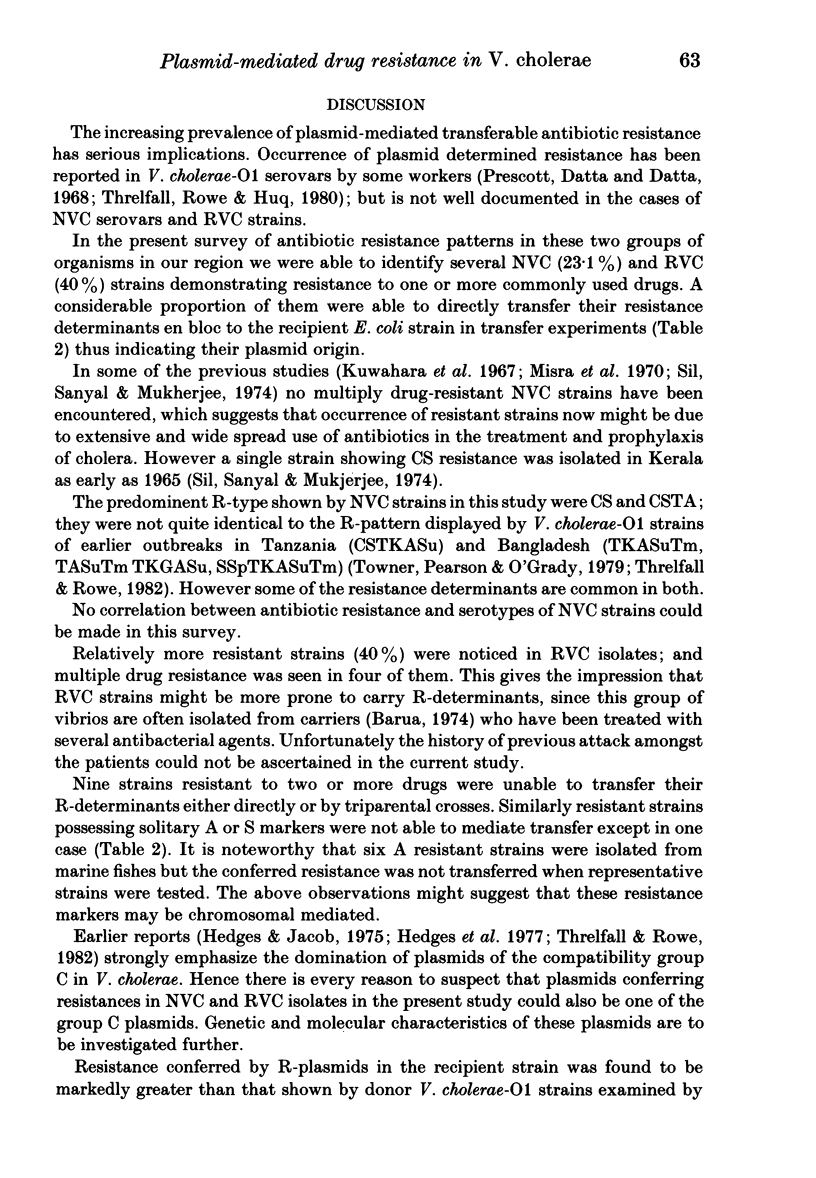
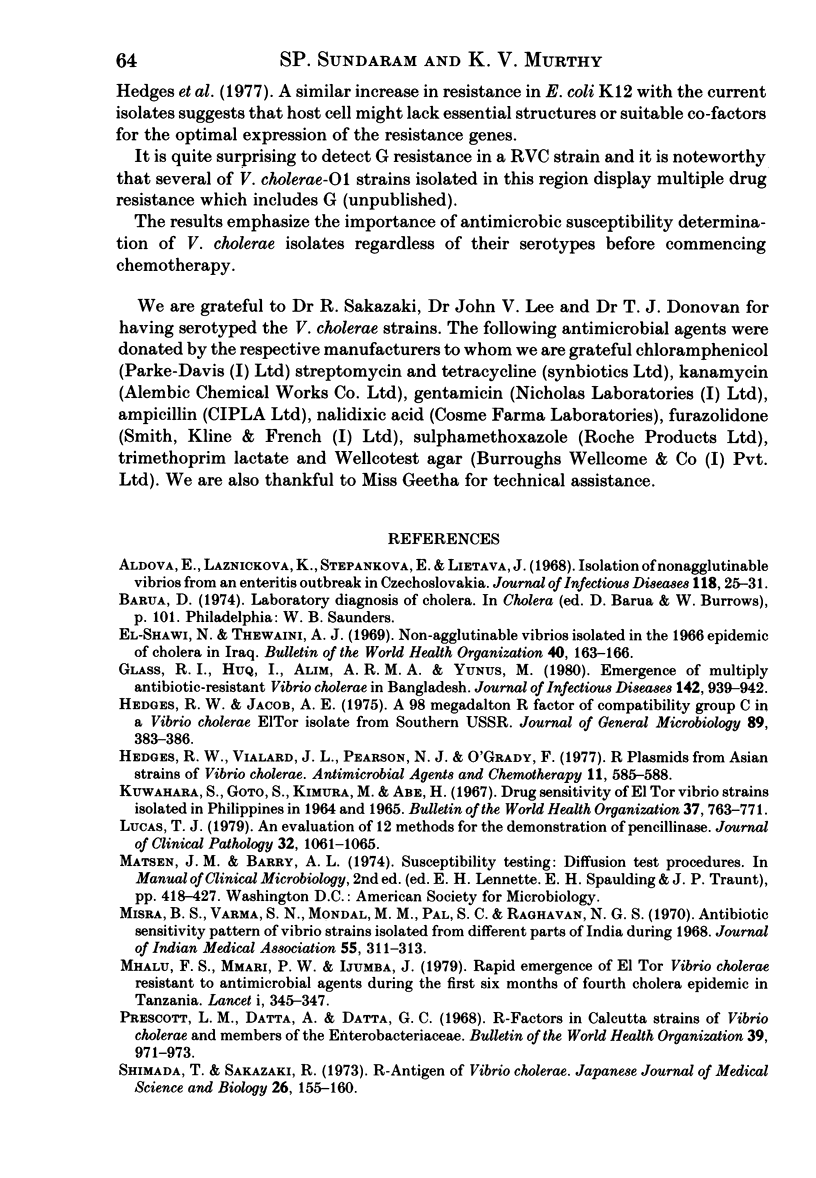
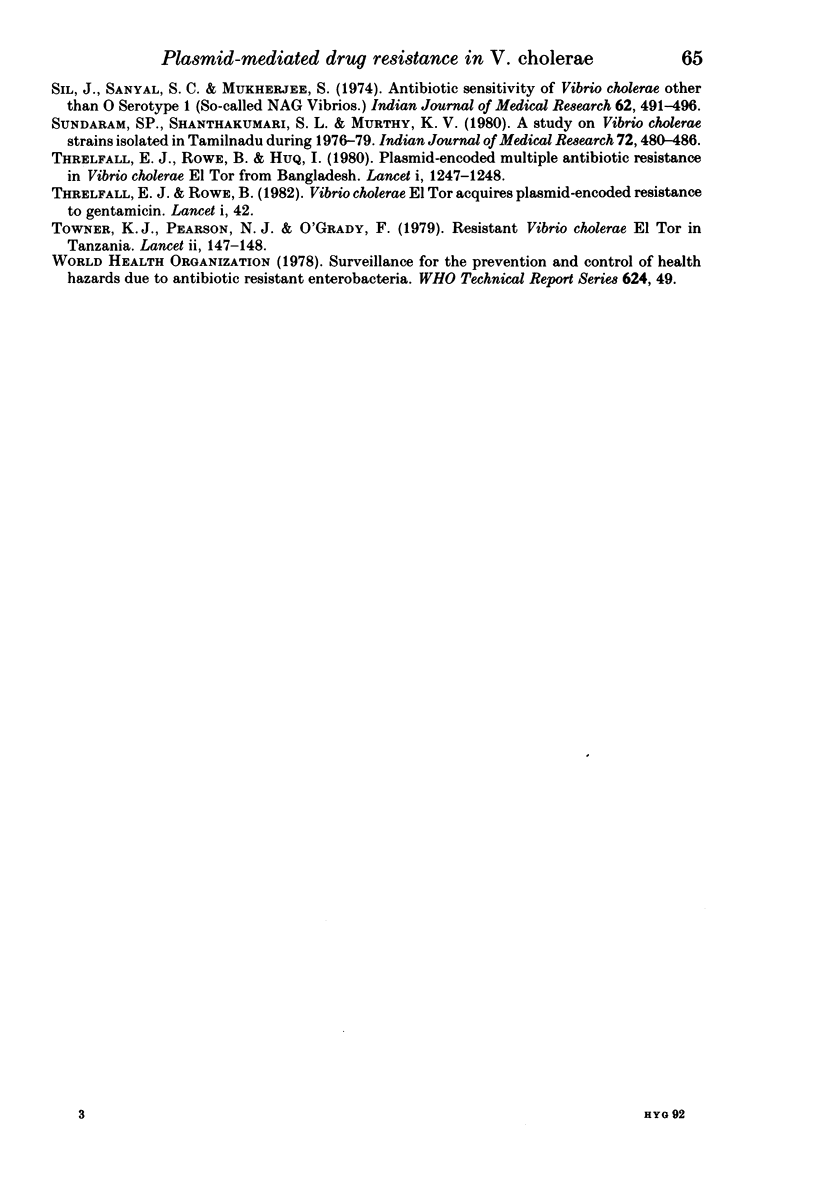
Selected References
These references are in PubMed. This may not be the complete list of references from this article.
- Aldová E., Láznicková K., Stepánková E., Lietava J. Isolation of nonagglutinable vibrios from an enteritis outbreak in Czechoslovakia. J Infect Dis. 1968 Feb;118(1):25–31. doi: 10.1093/infdis/118.1.25. [DOI] [PubMed] [Google Scholar]
- Glass R. I., Huq I., Alim A. R., Yunus M. Emergence of multiply antibiotic-resistant Vibrio cholerae in Bangladesh. J Infect Dis. 1980 Dec;142(6):939–942. doi: 10.1093/infdis/142.6.939. [DOI] [PubMed] [Google Scholar]
- Hedges R. W., Jacob A. E. A 98 megadalton R factor of compatibility group C in a Vibrio cholerae El Tor isolate from southern U.S.S.R. J Gen Microbiol. 1975 Aug;89(2):383–386. doi: 10.1099/00221287-89-2-383. [DOI] [PubMed] [Google Scholar]
- Hedges R. W., Vialard J. L., Pearson N. J., O'Grady F. R plasmids from Asian strains of Vibrio cholerae. Antimicrob Agents Chemother. 1977 Apr;11(4):585–588. doi: 10.1128/aac.11.4.585. [DOI] [PMC free article] [PubMed] [Google Scholar]
- Kuwahara S., Goto S., Kimura M., Abe H. Drug-sensitivity of El Tor vibrio strains isolated in the Philippines in 1964 and 1965. Bull World Health Organ. 1967;37(5):763–771. [PMC free article] [PubMed] [Google Scholar]
- Lucas T. J. An evaluation of 12 methods for the demonstration of penicillinase. J Clin Pathol. 1979 Oct;32(10):1061–1065. doi: 10.1136/jcp.32.10.1061. [DOI] [PMC free article] [PubMed] [Google Scholar]
- Mhalu F. S., Mmari P. W., Ijumba J. Rapid emergence of El Tor Vibrio cholerae resistant to antimicrobial agents during first six months of fourth cholera epidemic in Tanzania. Lancet. 1979 Feb 17;1(8112):345–347. doi: 10.1016/s0140-6736(79)92889-7. [DOI] [PubMed] [Google Scholar]
- Misra B. S., Varma S. N., Mondal M. M., Pal S. C., Raghavan N. G. Antibiotic sensitivity pattern of vibrio strains isolated from different parts of India during 1968. J Indian Med Assoc. 1970 Nov 1;55(9):311–313. [PubMed] [Google Scholar]
- Prescott L. M., Datta A., Datta G. C. R-factors in Calcutta strains of Vibrio cholerae and members of the Enterobacteriaceae. Bull World Health Organ. 1968;39(6):971–973. [PMC free article] [PubMed] [Google Scholar]
- Sanyal S. C., Mukherjee S., Sil J. Antibiotic sensitivity of Vibrio cholerae other than O serotype 1 (so-called NAG vibrios). Indian J Med Res. 1974 Apr;62(4):491–496. [PubMed] [Google Scholar]
- Shimada T., Sakazaki R. R antigen of vibrio cholerae. Jpn J Med Sci Biol. 1973 Aug;26(4):155–160. doi: 10.7883/yoken1952.26.155. [DOI] [PubMed] [Google Scholar]
- Sundaram S. P., Shantha Kumari S. L., Murthy K. V. A study on Vibrio cholerae strains isolated in Tamil Nadu during 1976-79. Indian J Med Res. 1980 Oct;72:480–486. [PubMed] [Google Scholar]
- Threlfall E. J., Rowe B., Huq I. Plasmid-encoded multiple antibiotic resistance in Vibrio cholerae El Tor from Bangladesh. Lancet. 1980 Jun 7;1(8180):1247–1248. doi: 10.1016/s0140-6736(80)91701-8. [DOI] [PubMed] [Google Scholar]
- Threlfall E. J., Rowe B. Vibrio cholerae El Tor acquires plasmid-encoded resistance to gentamicin. Lancet. 1982 Jan 2;1(8262):42–42. doi: 10.1016/s0140-6736(82)92578-8. [DOI] [PubMed] [Google Scholar]
- Towner K. J., Pearson N. J., O'Grady F. Resistant Vibrio cholerae El Tor in Tanzania. Lancet. 1979 Jul 21;2(8134):147–148. doi: 10.1016/s0140-6736(79)90026-6. [DOI] [PubMed] [Google Scholar]
- el Shawi N., Thewaini A. J. Non-agglutinable vibrios isolated in the 1966 epidemic of cholera in Irag. Bull World Health Organ. 1969;40(1):163–166. [PMC free article] [PubMed] [Google Scholar]


